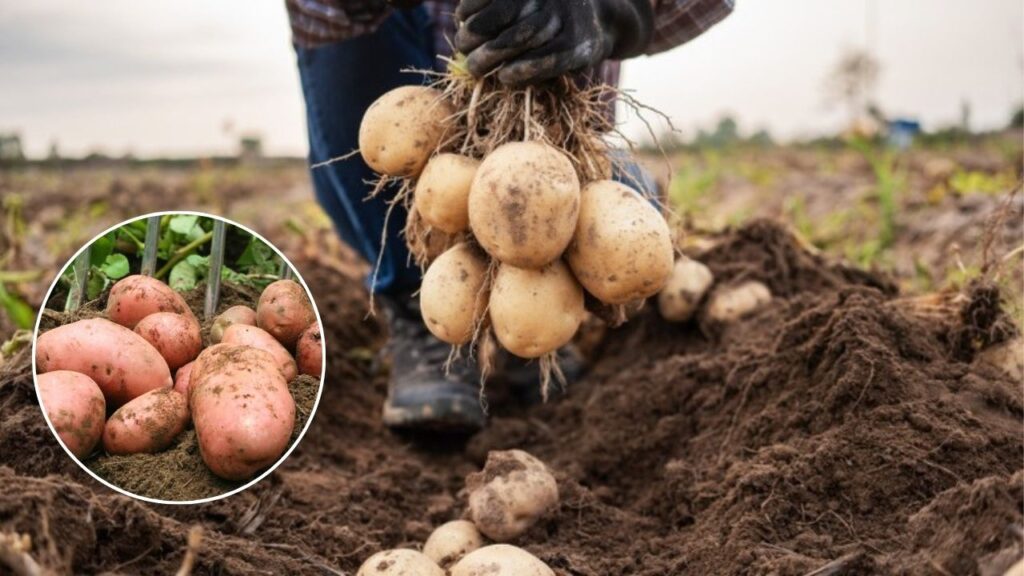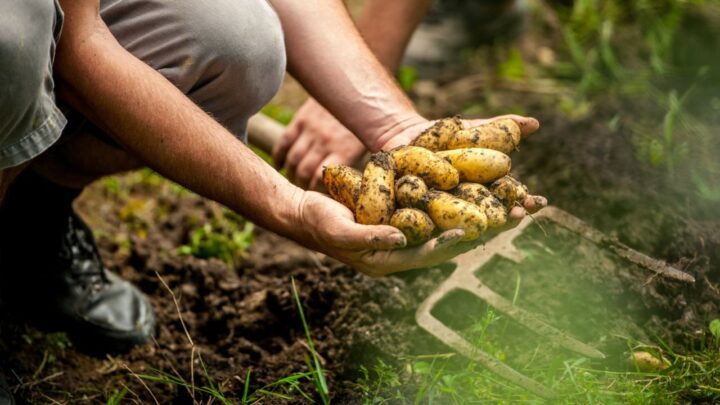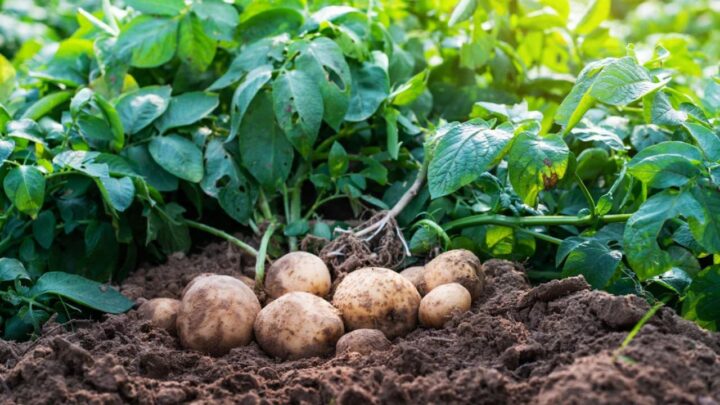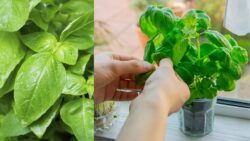Plant Potatoes in Fall : Fall is the perfect time to start growing potatoes if you want an early, healthy harvest next year. Expert farmers share their late-season secrets to help you grow like a pro.

Why Fall Planting Works So Well for Potatoes
Planting potatoes in fall may sound unusual, but it comes with some major advantages. The cool weather reduces the chances of pests and diseases. Plus, the soil stays moist longer, which potatoes love. By starting now, the tubers get a head start and begin sprouting as soon as spring arrives. Many farmers have found this method yields larger, more flavorful crops.
This technique is especially useful in regions with mild winters where the ground doesn’t freeze deeply. Even in colder areas, with proper mulching and placement, fall potatoes can thrive. Once the soil warms up in early spring, growth kicks in without delay. It’s a low-maintenance, high-reward method that more home gardeners are now embracing.
Best Potato Varieties to Plant in Autumn
Not all potatoes are ideal for fall planting. You’ll want varieties that handle cold better and store well in the soil. Here are a few farmer-recommended picks:
- Yukon Gold – Early to mature and perfect for creamy mashed potatoes.
- Red Pontiac – Thrives in cooler climates and stores well underground.
- Russet Burbank – Classic choice with long dormancy and strong yields.
- Adirondack Blue – Unique color and frost-tolerant variety.
Make sure to choose certified disease-free seed potatoes for best results. Avoid using grocery store potatoes as they might carry pathogens or be treated to prevent sprouting.

Preparing the Soil for Fall Potato Planting
Before planting, it’s crucial to prepare your soil properly. Potatoes grow best in light, loose soil with good drainage. Begin by clearing out weeds and debris. Then work in compost or aged manure to enrich the soil. Potatoes are heavy feeders and appreciate nutrient-rich ground.
Check the pH level – it should be between 5.0 and 6.5. If your soil is too acidic or alkaline, adjust it before planting. Avoid soggy or low-lying areas where water collects. Potatoes need a healthy balance of moisture and air around their roots.
Ideal Time and Conditions for Fall Planting
The best time to plant potatoes in the fall is about 2 to 3 weeks before the first hard frost. This allows the seed potatoes to settle and begin forming roots before winter sets in. You’ll need:
- Daytime temperatures between 55°F and 65°F
- Soil that’s workable, not frozen or too wet
- A forecast free of excessive rain or snow
Cover your rows with a thick layer of mulch—straw, leaves, or compost—to insulate them through winter. This layer protects against cold and helps maintain moisture.
Step-by-Step Guide to Plant Potatoes in Fall
- Choose the Right Spot
Pick a location that gets at least 6 hours of sunlight daily. It should be well-drained and free from weeds or previous potato crops to avoid disease buildup.
- Prepare and Enrich the Soil
Loosen the soil to a depth of 10–12 inches. Mix in compost or well-rotted manure to improve fertility and drainage. Avoid using fresh manure as it may burn the seed potatoes.
- Cut and Cure Your Seed Potatoes
If using large seed potatoes, cut them into chunks with at least one eye each. Let them air-dry for 1–2 days to form a protective layer over the cut surface. This helps prevent rot.
- Plant at the Right Depth
Plant each piece 4–6 inches deep and 12 inches apart. Cover them with soil and then add a 3–4 inch mulch layer to insulate against winter chill.
- Water Lightly After Planting
Water just enough to moisten the soil. Too much water can cause rotting, especially in colder weather. Once the soil is cool, you can stop watering until spring.
- Label and Monitor
Mark the rows so you don’t accidentally dig them up later. Check occasionally to ensure mulch remains in place and rodents aren’t disturbing the area.
Extra Tips for Successful Fall Potato Gardening
- Use raised beds for better drainage in rainy regions.
- Add a floating row cover for extra protection in snowy areas.
- Rotate crops to reduce chances of disease and pests.
- Keep detailed notes to track which varieties work best in your climate.
- Harvest only when the soil warms in spring and vines start growing.

FAQs
Can I grow fall potatoes in a container?
Yes, you can use large containers with good drainage and deep soil. Be sure to protect them from freezing temperatures with covers or by placing them in a sheltered area.
Will potatoes survive freezing winters?
If the ground freezes deeply in your region, it’s best to mulch heavily or delay planting until late winter. In mild zones, fall planting works well with proper soil insulation.
When will fall-planted potatoes be ready to harvest?
You’ll usually harvest them in early to mid-spring, once the shoots start growing and the soil has warmed. They’re often ready earlier than spring-planted crops.
Should I fertilize fall potatoes?
Yes, mix organic fertilizer or compost into the soil before planting. Avoid high-nitrogen fertilizers during the fall, as they can encourage leafy growth instead of tuber development.
Planting potatoes in fall may be your new favorite garden hack! With the right steps, you’ll enjoy a quicker harvest and healthier crops. Trust the pros, prep your plot, and let nature work its magic while you rest through winter.





